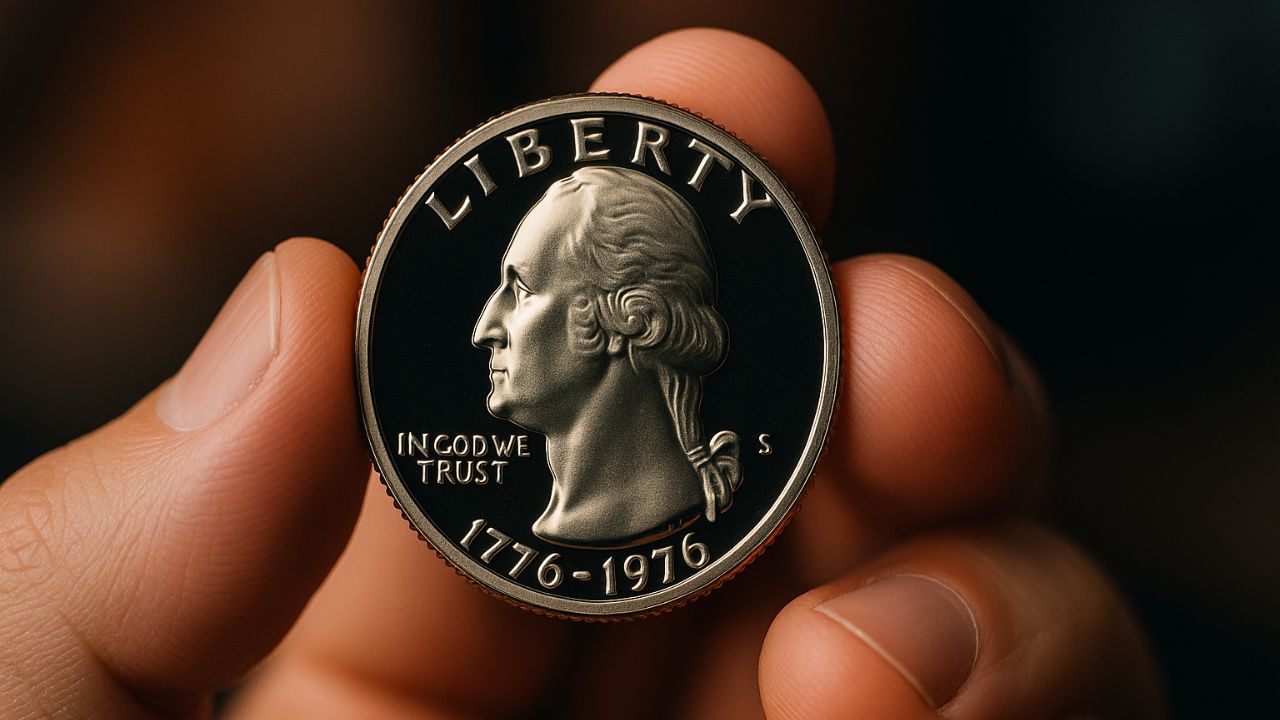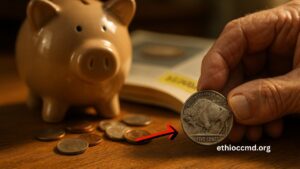If you’ve been casually sorting coins, you might be sitting on four- and five‑figure treasures – or even a rare $300K Bicentennial Quarter.
This article reveals latest auction data and four other valuable coins in your change jar, with detailed facts, figures, and expert tips on spotting them.
1. The $300K Bicentennial Quarter (1976‑S Proof)
Latest reports confirm a 1976‑S proof Bicentennial Quarter that sold near $300,000.
This is a 40% silver proof coin from the San Francisco Mint, exceptionally rare in high grade and sought by collectors. It stands out as the most valuable Bicentennial quarter to surface.
Why So Valuable?
- Silver content & proof strike from S mint.
- Extremely low numbers preserved in mint condition.
- Graded by professional services, confirming prestige.
2. Four Other Valuable Coins That Might Be in Your Change Jar
A. 1943 Copper Lincoln Penny
Most 1943 pennies are zinc‑coated steel due to wartime copper shortage. But the few copper versions are prized.
One sold for up to $336,000, magnet test helps distinguish (steel magnets stick; copper does not).
B. 1955 Doubled‑Die Lincoln Cent
This error coin shows doubled lettering especially on Date and inscriptions. About 20,000–24,000 were released. In choice condition, value can approach $2,700 .
C. 1969‑S or 1972 DoubledLincoln Cents
- 1969‑S Lincoln cent doubled die variety has fetched $40,000 for certain specimens.
- 1972 Lincoln cent doubled die error coins can be worth at least $400 or more.
D. 1913 Liberty Head Nickel
Extremely scarce: only five known examples. One sold for about $3.7 million. If you ever spot one, you’re holding legendary rarity.
Quick Reference
| Coin | Date / Mint | Distinguishing Feature | Approximate Value |
|---|---|---|---|
| Bicentennial Quarter (40% Silver) | 1976‑S Proof | Silver, “S” mint mark, proof‑strike | ~$300,000 |
| Lincoln Penny (copper error) | 1943 (rare copper) | Copper instead of zinc‑steel | Up to ~$336,000 |
| Doubled‑Die Penny (1955) | 1955 Lincoln cent | Doubled inscriptions on date/letters | ~$2,700 |
| Doubled‑Die Penny (1969‑S / 1972) | 1969‑S / 1972 | Doubling on date and lettering | ~$40,000 (1969‑S); $400+ (1972) |
| Liberty Head Nickel | 1913 | Only five known, iconic rarity | ~$3.7 million |
How to Spot These Coins
Look for Mint Marks and Errors
- Bicentennial quarter: look for “S” mint mark and proof-like surface.
- Lincoln cents: inspect closely for doubling on date or letters.
- 1943 copper penny: test for magnet attraction; copper won’t stick.
- 1913 nickel: virtually no copies exist – extremely rare.
Condition Matters
The value skyrockets if coins are uncirculated, mint‑state, or graded by a professional service.
Authentication Advice
Because fakes are common (especially for high‑value errors), always seek professional grading or validation before selling.
You might be holding more than small change—a rare 1976‑S Silver Bicentennial Quarter fetches nearly $300K, while certain pennies, nickels, and doubled‑die errors can be worth hundreds to millions.
Check your change jar carefully for mint marks, minting errors, copper instead of steel, and doubling on motifs.
If you think you’ve found a rare piece, seek professional authentication. Even a humble coin jar could hide your next big score.
FAQs
How can I authenticate a rare error coin?
Send it to a trusted grading service (e.g., PCGS, NGC). Authentication and grading can significantly raise resale value.
Which coin is most likely to appear in everyday change?
The 1955 doubled‑die penny or less dramatic doubled‑die cents (1969, 1972) are small‑scale errors occasionally passing into circulation.
Are these values current?
Yes—this article uses most recent auction results through mid‑2025 including the $300K Bicentennial quarter and other documented sales.



